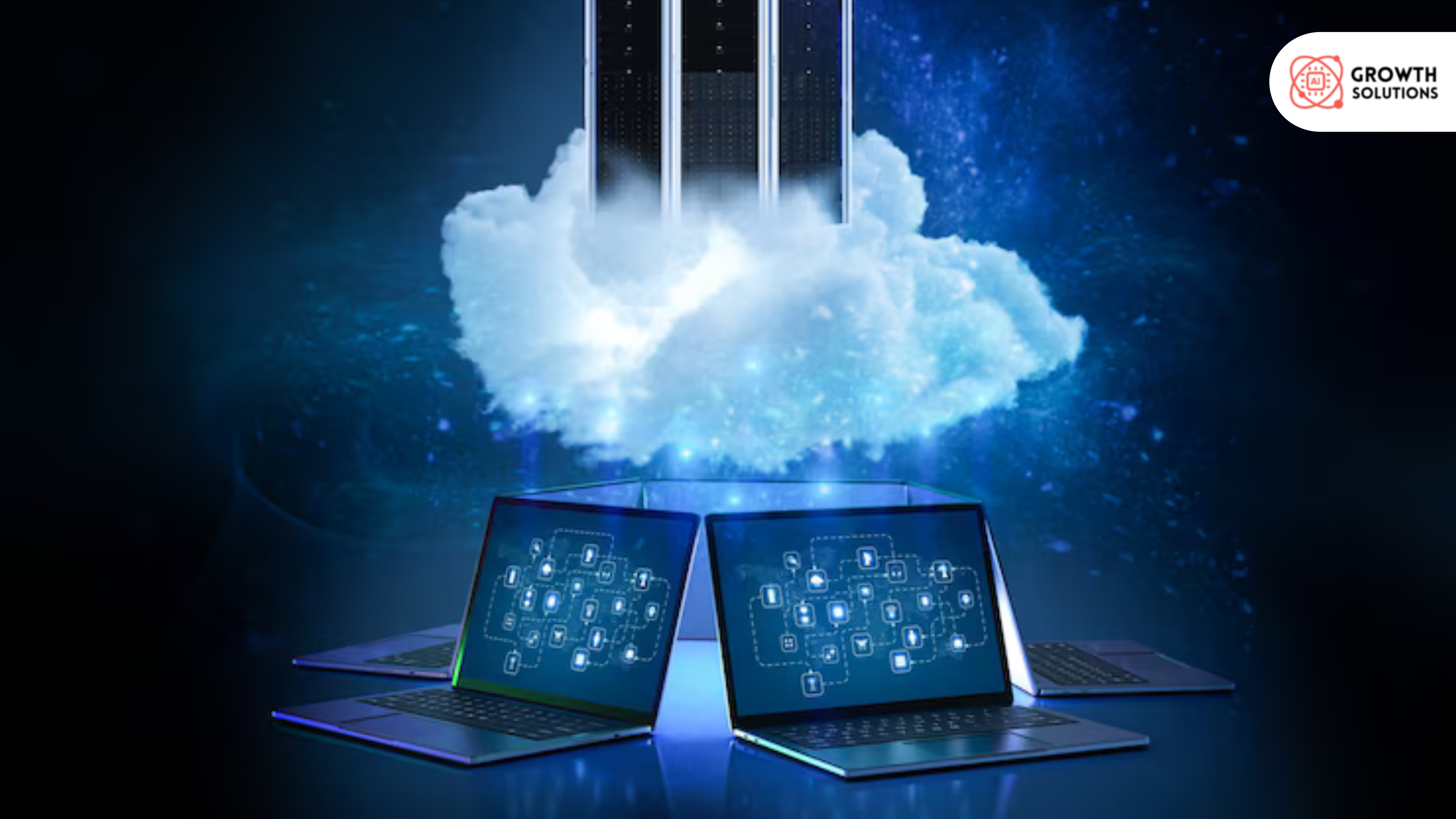18554493114
Call us for any question.
- support@aigrowth-solutions.com
- 349 Blue Point Rd Farmingville, NY 11738,USA
Call us for any question.
18554493114
Search for products
Blog Detail
- Home
- Blog
- Details
What Are the Key Features of Modern Remote Desktop Solutions?
Remote access technologies have evolved far beyond simple screen mirroring. Businesses today demand precision, speed, and airtight security from their Remote Desktop Services, especially in operational settings where flexibility and data protection are critical. With dispersed teams, real-time support needs, and device-agnostic workflows becoming the norm, modern remote desktop platforms must offer more than just basic connectivity. Ai Growth Solution, a leader in adaptive IT services, delivers comprehensive tools for teams seeking to operate across geographies without sacrificing control or security.
Defining the Role of Remote Desktop in Modern Infrastructure
In the current enterprise environment, Remote Desktop Services are not just an add-on utility they are foundational to efficient, location-independent operations. Whether facilitating remote tech support or allowing executives to access sensitive systems while traveling, these tools enable uninterrupted productivity. As business models expand beyond traditional office settings, the demand for remote access solutions that integrate deeply into IT services has intensified.
Cross-Platform Flexibility Across Devices and Systems
One of the most critical components of modern Remote Desktop Services is platform versatility. Organizations do not operate in a single-device ecosystem. Team members may switch between macOS, Windows, Linux, iOS, and Android environments throughout the day. True cross-platform support must include native applications as well as browser-based clients, ensuring users have reliable access without downloading cumbersome software. This feature also allows IT services teams to roll out remote access rapidly during emergencies or hardware failures.
High-Performance Access with Low Latency Execution
Performance is non-negotiable in today’s high-speed digital environments. Modern remote desktop platforms must offer seamless interaction, including support for high-resolution displays and graphical interfaces. Whether a designer is working on a visual project or an engineer is analyzing real-time simulations, the system must accommodate GPU rendering and deliver low latency, even over wireless networks. Providers like Ai Growth Solution optimize connection protocols to ensure minimal delays and stable input synchronization across locations.
Industry-Grade Encryption and Authentication Protocols
Security is a cornerstone of any modern Remote Desktop Services platform. Enterprises are vulnerable to unauthorized access attempts, data interception, and account hijacking if encryption standards are outdated or absent. Solutions from reputable vendor’s implement AES 256-bit encryption combined with TLS protocols to protect data in transit. Multi-factor authentication, biometric validation, and role-based access further enhance protection layers. Within IT services, administrators require centralized oversight to monitor these settings and receive real-time alerts for unusual activity.
Seamless File Transfers and Clipboard Integration
Modern workflows require real-time exchange of documents, screenshots, and code snippets across machines. This is only possible when file transfer functions and clipboard synchronization are embedded into the remote desktop session. The latest platforms allow drag-and-drop functionality and dynamic clipboard syncing so that users can copy formatted data between sessions without needing third-party tools. These actions, when encrypted and logged, support compliance frameworks often required in regulated industries supported by enterprise-level IT services.
Monitoring and Recording Tools for Compliance and Auditing
Session logging and recording features are vital, especially for industries operating under strict audit requirements. Remote desktop sessions can now be automatically recorded, with logs cataloged for administrative review. This feature not only helps resolve disputes or errors post-session but also reinforces policy compliance. Alerts can be configured for unauthorized access, time-of-day anomalies, or file access breaches capabilities integrated directly into the Remote Desktop Services architecture offered by Ai Growth Solution.
Support for Multiple Screens and Simultaneous Sessions
Technical users and IT administrators often work across multi-monitor configurations. A modern solution must be able to replicate these setups remotely without lag or display misalignment. Equally important is the ability to manage multiple sessions at once allowing a technician to support more than one employee, or a manager to monitor several systems. This functionality creates new efficiencies, particularly within operations-led IT services that require visibility and multitasking across multiple endpoints.
Peripheral Device Redirection and Remote Printing
The ability to redirect peripheral devices such as USB drives, printers, or even webcams enhances usability during remote sessions. Users may need to access a connected smartcard reader or scan documents via a remote scanner actions made possible by sophisticated device redirection support. Remote printing, especially in sectors like finance or logistics, allows staff to initiate document output from distant locations while maintaining workflow integrity through Remote Desktop Services.
Enterprise Management and Centralized Scalability
For large organizations, the ability to manage hundreds of endpoints from a single console is critical. Enterprise-focused platforms include centralized dashboards for user provisioning, policy enforcement, and connection monitoring. These systems also support tiered user roles, delegation to team leads, and integration with directory services like LDAP or Azure AD. Scalability features are a must-have for growing teams and are core components of future-proof IT services infrastructure.
Integration With Business and Automation Tools
Remote Desktop Services now offer extensive compatibility with third-party platforms such as help desk ticketing systems, customer support CRMs, and workflow management tools. Application Programming Interfaces (APIs) provided by platforms like Ai Growth Solution allow businesses to automate session creation, log archival, or user onboarding processes. Integration with platforms like Service Now, Jira, or Zoho can further streamline support tasks and embed remote access into broader service ecosystems.
Unattended Access and Power Management Functions
Sometimes, remote desktop access is needed when no one is physically present at the host machine. Unattended access with secure pre-authorized credentials allows IT teams to patch, monitor, or troubleshoot systems during off-hours. Wake-on-LAN and scheduled restart capabilities extend control to even powered-down systems features indispensable to round-the-clock IT services management.
Streamlined User Interface and Global Accessibility
While backend security and performance are essential, the user interface must also be intuitive. Platforms must cater to both IT professionals and non-technical staff. Multi-language support, consistent navigation, shortcut configuration, and accessible onboarding tutorials enhance usability across global teams. An intuitive UI lowers training costs and improves engagement making it easier to deploy remote access within non-technical departments.
Real-World Use Cases Across Core Industries
Different industries utilize Remote Desktop Services in diverse ways. In the medical sector, physicians rely on secure remote access to electronic health records (EHRs) for patient care continuity. Financial analysts need to tap into encrypted databases or trading systems during volatile market hours. Educators may share live lessons or troubleshoot student devices. IT services departments, irrespective of industry, depend on these systems to deliver responsive support without geographical constraints.
Subscription Models and Cost Efficiency
Pricing models vary widely, from pay-as-you-go subscriptions to enterprise license agreements. Organizations must assess their usage patterns occasional tech support vs. continuous remote development and choose accordingly. Transparent billing, usage-based scaling, and flexible upgrade paths are all signs of a vendor aligned with business growth. When selecting a platform, decision-makers should evaluate total cost of ownership alongside performance benchmarks and IT services integration capabilities.
Conclusion
Emerging technologies such as artificial intelligence and machine learning are beginning to influence remote desktop systems. Predictive alerts, intelligent session optimization, and auto-resolution of common user issues are becoming standard. Cloud-hosted desktops and virtual desktop infrastructure (VDI) integrations will redefine how users engage with digital environments. As providers like Ai Growth Solution adopt these innovations, organizations will gain even more agility and control over their digital ecosystems.
Category
Remote Desktop Services
Previous Post
What Industries Commonly Use Remote Desktop Services?
In today’s business ecosystem, the need for secure, fast, and centralized digital access has b...
Today's businesses span borders, requiring versatile solutions.



 Admin
Admin